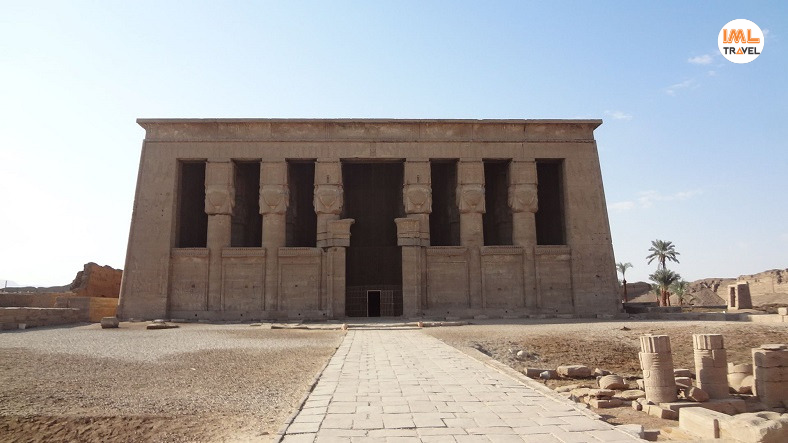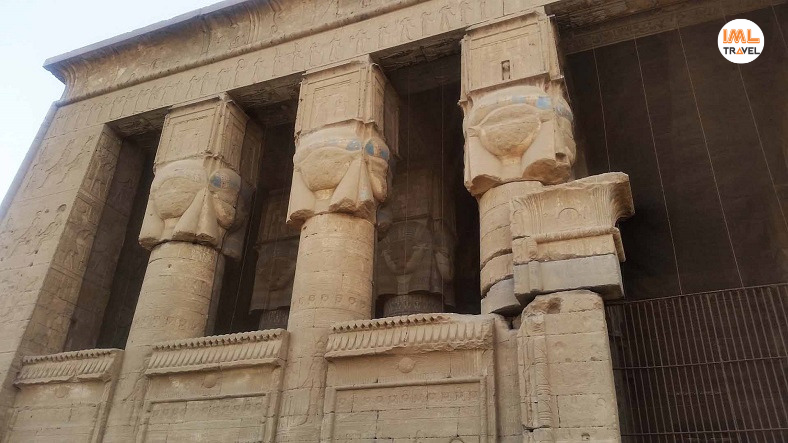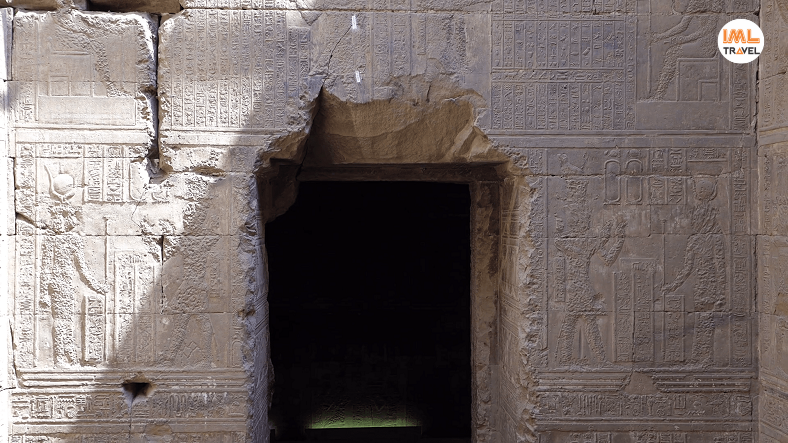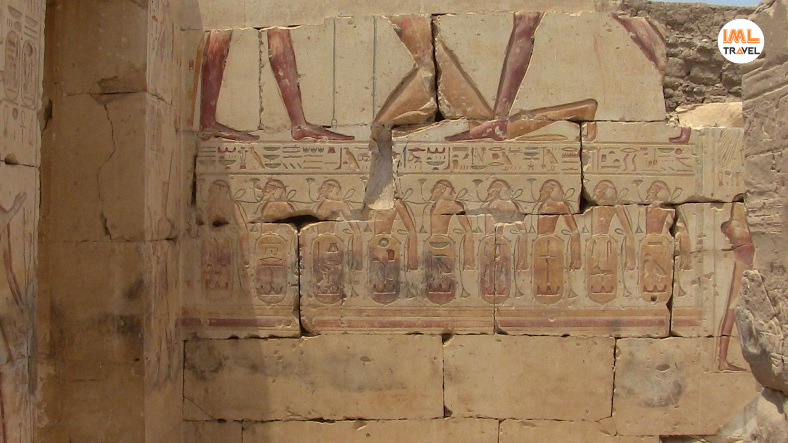Egypt has a storied history, filled with monuments and temples that are all amazing in their own way. But some are much more impressive than others — and Dendera just might be my favorite of the bunch.
In front of its massive columns covered in hieroglyphics, one may seem like a dwarf. Moreover, it is fascinating to see creatures on the turquoise ceiling representing zodiac signs. Then there’s the secret passage below the temple and much more.
Keep reading to find out the references of Zodiac Signs at temple of Hathor.
All of these features make Dendera majestic, but….
…the time you think it’s over, something else pops up in front of your eyes.
You might think about The Great Temple of Ramses II at Abu Simbel Temple. Yes, it is amazingly gorgeous and jaw-dropping, but while visiting there, one may feel like a tourist.
On the other hand, at Dendera complex, you can wander in the quiet, cool colonnade; look up in awe, just like a pilgrim.
What is the Dendera Complex?
Situated on the west bank of the Nile, Dendera complex is one of ancient Egypt’s most important religious temples. This magnificent complex houses the Temple of Hathor (the deity of love, music, & fertility).
Did you know? Temple of Hathor is one of the most preserved temples in Egypt and other temples & sanctuaries that were unfortunately lost in time.
The complex covers 40,000 square metre which is surrounded by a mud brick wall. It contains the remains of many shrines and temples dating back to the Old Kingdom (2575-2150 BC).
During this time period, all the sanctuaries were destroyed and reconstructed many times but the current temple dates back to the Roman-Greco period.
Moreover, Roman Emperor Tiberius completed this complex on a fountain which Pharaoh Pepi I of the 6th dynasty of the old kingdom originally built.
The Temple of Hathor
The Temple of Hathor is a part of the larger religious complex of Dendera. Pharaoh Ptolemy VIII & Queen Cleopatra II built this temple in the 1st century BC to preserve their names in history and also to honor their deity Hathor.
However, we rather consider temple of Hathor ‘new’ when it comes to ancient Egyptian temples as its construction began during the 30th dynasty and completed during the Roman period.
The Temple of Hathor has a hall with 18 massive decorated Hathoric columns. The interior wall of the great hall has hypnotic scenes depicting offerings of Roman emperors and a ceiling filled with attractive astronomical decorations.
Also, there is a representation of the legendary sun boat of Hathor and her husband Horus being given offerings by Ptolemy VIII.
What to See?
- Outside of the Temple of Hathor
After passing through the visitor center, you will see the Temple of Hathor standing in front of you. To the right are the poorly preserved remains of Roman Mammisi and Coptic Basilica.
For you information – A Mammisi is an ancient Egyptian small chapel attached to a larger temple, built from the Late Period, and associated with the nativity of a god.
Next to the Mammisi are the remains of Coptic Church of 5th century CE.
Here, you can make out the size of the church and spot some Christian carvings in some of the stonework.
Next, the outer wall of the temple leads visitors to well preserved reliefs of rulers offering gifts to various Gods.The most famous one is Cleopatra with her son that she had with Julius Caesar. In this, she is offering their respect to the Goddess Hathor.
- Inside the Temple of Hathor
The most gorgeous and impressive room is the outer hypostyle hall. It is beautiful with its detailed and brightly colored ceiling along with the towers with the face of Hathor on all four sides.
Sadly, early Christians destroyed these faces on the walls and columns. Despite this, the remaining art work is still stunning and you can see the details from different angles.
Trust me when I say, the best way to see the ceilings of the temple is on your back!
There is just too much to look at and your neck to handle.
So kick back, relax, and enjoy the view.
Too much Zodiac references?
If you’ve made it this far into the article, then I would like to share the most interesting part of this temple – Zodiac Signs.
We all know what they are, but back in ancient times, Egyptians used Zodiac signs differently.
The mystical Dendera Zodiac signs are map to the stars on a plane projection showing 12 constellations found at the Osiris chapel at the Hathor temple.
It has images of the ram, the bull, the twins, the crab, the lion, the virgin, the scales, the scorpion, the archer, the goat, the watering pots and fishes with glittering tails.
These were used to create and organize the old Egyptian calendar.
Did you know? In 1820, French invaders removed the calendar from the ceiling of the temple and took it to the Louvre and replaced it with a fake version.
Now you know what to see and not miss on your next trip to the Temple of Hathor at Dendera complex.
FAQ
As Egypt is a hot country, the recommended time to visit is from October to April, when temperatures are at their most pleasant.
However, December and January are peak tourist months, and iconic sights like the Pyramids of Giza, the Temples of Luxor, and Abu Simbel can get uncomfortably crowded.
By train from Luxor, it only takes 45 minutes each way.
Also, there are several trains a day that pass through the cities, making it easy to arrange transport on your own. You can check the latest schedule on Egypt’s National Railways site.
Tickets range between 18-50 EGP ($0.84 – $2.80) each way.
- Duration of Visit and Things to Bring
– Plan on two hours.
– Wear good shoes and a hat.
– Bring water.
– Great pictures.












Leave a Reply
You must be logged in to post a comment.